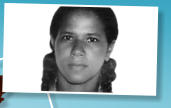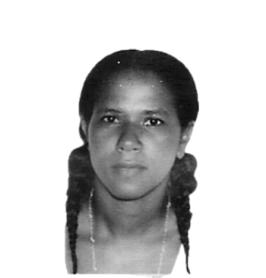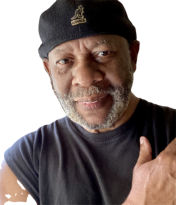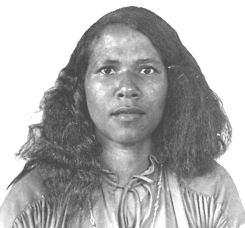
Poetry Oasis Blog
Therese Atkins with a help of a shunt, her journey without Physical and occupational therapy, living a normal life with the symptoms associated with normal pressure of hydrocephalus.



For
Therese,
her
condition
started
a
while
back
about
six
years
ago
December
20
th
,
2016,
she
visited
the
Bellin
Health
Physical
Medicine
Neuro
Consultant,
for
severe
pain
in
her
head,
the
attending
physician
Dr.
Brian
A
Knapp,
evaluated
her
and
his
diagnosis
was
that
she
suffered
from
Cerebrovascular
Accident
due
to
Thrombosis
of
left
Anterior
Cerebral
Artery.
Therese
is
a
patient
of
Hydrocephalus,
before
recently
I
did
not
know
what
that
is
much
less
knowing
my wife is a patient of this illness.
However
I
have
taken
the
liberty
to
research
its
meaning,
Hydrocephalus
is
the
buildup
of
too
much
cerebrospinal
fluid
in
the
brain.
Normally,
this
fluid
cushions
your
brain.
When
you
have
too
much,
though,
it
puts
harmful
pressure on your brain.
THERESE MEDICAL HISTORY OVERVIEW

B
L
O
G
W

T
H
E
R
E
S
E

Your best chance at winning is to be alert
I n this chapter I call overview I will tell you some things that are helpful to ensure that your patient enjoys a normal life, however, those are not my beliefs but the observation of living with someone who has Hydrocephalus, in that case, this patient happens to be my wife of fifty years, with the help of the shunt Therese was able to enjoy a normal life of course as normal as could be. The first thing you should do is schedule regular ongoing checkups, if I had not called in to schedule a six-month checkup with the doctor that performed her surgery, doubles to say she would not have been seen and this report which I have seen fit to post to you would be futile. Below is a report of the attending physician.
OVERVIEW
Nathan Zwagerman, MD
Therese
Atkins
is
a
very
pleasant
76-year-old
woman
with
a
history
of
ACA
stroke
with
residual
fourth
ventricular
IVH,
underwent
EVD
placement
followed
by
a
VP
shunt
placement
by
me.
I
last
saw
her
back
in
November
and
her
imaging
was
stable.
She
has
no
new
complaints.
She
is
otherwise
in
her
usual
state
of
health.
She
has
no
new
imaging to review.
In
summation,
Ms.
Atkins
is
a
very
pleasant
woman
who
presents
today
for
a
follow-up
evaluation.
At
this
point,
we
had
a
long
discussion
regarding
the
natural
history
of
this
as
well
as
the
options
of
treatment
with
continued
observation
versus
intervention.
At
this
point,
we
will
plan
on
keeping
her
on
continued
conservative
management.
We will plan on getting her back to see us on a p.r.n. basis.
In
the
meantime,
if
she
has
any
questions,
comments,
or
concerns,
she
can
contact
our
office,
but
otherwise,
we
will see her back as needed.



QUESTION AUTHORITY

After
reading
the
doctor’s
note
above
I
am
sure
that
you
believe
what
you
had
just
read,
well
let's
put
the
record
straight
I
am
writing
this
to
help
enlighten
the
subject
of
shunting
in
general,
I
do
not
fabricate, discriminate, or lie to the contrary.
Therese
has
not
uttered
a
word
of
speech
for
six
years
to
me
or
anyone
for
that
matter,
most
assuredly
any
communication
on
her
behalf
is
being
done
by
myself,
however,
this
is
not
about
me
so
when
I
tell
you
that
the
statement
made
above
which
states
that
and
I
quote,
we
will
plan
on
keeping
her
on
continued
conservative
versus
management,
is
news
to
me
nothing
has
been
said
to
me
about
that
except
it
being
written
in
the
doctor
note
and
place
in
Therese health chart.
Therese
is
a
pleasant
woman
indeed
today
at
her
follow-up
evaluation
there
has
not
been
any
long
or
short
discussion
regarding
the
natural
history
of
the
shunt
placement
in
Therese's
head
and
no
option
of
treatment
offered
to
her
by
the
attending
physician,
what
is
written
above
is
all
smoking
mirrors
probably
an
oversight
on
the
part
of
the doctor or the communication never took place at all.
But
to
be
in
the
loop
you
will
need
regular,
ongoing
checkups
for
the
patient
scheduled,
to
be
honest
even
at
these
late
stages
Therese
is
still
awaiting
the
information
promised
by
the
physician,
about
the
option
of
treatment
schedule promised.
CAUTION:
Do
not
rely
simply
on
the
fact
that
everything
will
be
done
as
it
supposes
to
be
for
the
benefit
of
treating
your
patient
these
words
were
imputed
into
Therese's
chart
but
not
carried
out
even
at
this
time
and
she
is
well
into
her tenth month.

Check Your Chart
Make
sure
you
comprehend
the
conversation
regarding
what
is
being
done
to
the
patient
with
the
attending
physician,
check
your
health
chart,
In
my
case,
I
don’t
know
what
the
doctor
mean
when
he
wrote
she
can
follow
up
on
a
p.r.n
basis,
we
never
discuss
that,
but
nevertheless
it
is
written
in
her
chart
below
is
the
information
imputed
into
Therese
chart,
once
again
I
believe
it
must
be
an
oversight
on
the
part
of
the
attending physician.
You
saw
NATHAN
T
ZWAGERMAN,
MD
on
Wednesday,
July
20,
2022.
The
following
issues
were
addressed:
Postsurgical presence of cerebrospinal fluid drainage device and IVH (intraventricular hemorrhage
ATTENDING
PHYSICIAN:
Nathan
Zwagerman,
MD
Therese
Atkins
is
a
very
pleasant
75-year-old
woman
with
a
history
of
ACA
stroke
with
residual
fourth
ventricular
IVH,
underwent
EVD
placement
followed
by
a
Certas
valve
by
myself.
Postoperatively,
she
had
uncomplicated
course.
She
is
otherwise
doing
relatively
well.
At
this
point, she can follow up with me on a p.r.n. basis.
.


FAMILY EMOTIONAL FACTORS
Firstly have regular check-ups with the neurosurgeon this will help ensure that the shunt is working correctly, and progress is on track freeing you to live a normal lifestyle. Hydrocephalus requires long-term follow-up care so it is important to have regular check-ups, Therese attending physician dismiss her after the first follow-up without scheduling future care, the neurosurgeon needs to monitor your patient progress and make a test for any changes that may indicate that there is a shunt malfunction. After the patient's discharge, there will be a transition back to your health care team, and attending medical check-ups is recommended, Physical and occupational therapy may speed the recovery and further enhance the patient's health, since this is all about Therese you need to know that Therese had her share of therapy done at home by a private company, after the completion of the schedule seven visit her therapy is being done by me her husband. I have cared for her those last six years and now well into her tenth month of living with a shunt, so many strange and unusual happenings with Therese prompt me to record her daily life, seeing such signs as walking difficulties, poor bladder control, and progressive dementia, all of this can be slowed down given the proper care, that being said brings me to the most important weapon you will have in this venture it is emotional support. EMOTIONAL SUPPORT : Whether you know it or not if you are caring for someone with hydrocephalus you are not alone there is an institution that you can reach out to for help, but the most important is the family emotional factors for you and the family must be considered that is why sharing the responsibilities is recommended and needed. Regular feelings with your doctor will help them provide the best professional guidance for you, while the help of relatives and friends or other professional help may be necessary for moral support and what is best for the patient to accomplish this goal. Therese is gradually showing signs of loss of interest in our quality time together, she rather spends most of her time sleeping, She is having difficulties moving her right leg when walking, Therese's shunt is placed on the right side of her head. i will be updating this blog four months from today. PLEASE RETURN HERE JANUARY 2023
Recommendations




Copyright poetry oasis for kenvilatkins powered by Wings studio 2022













